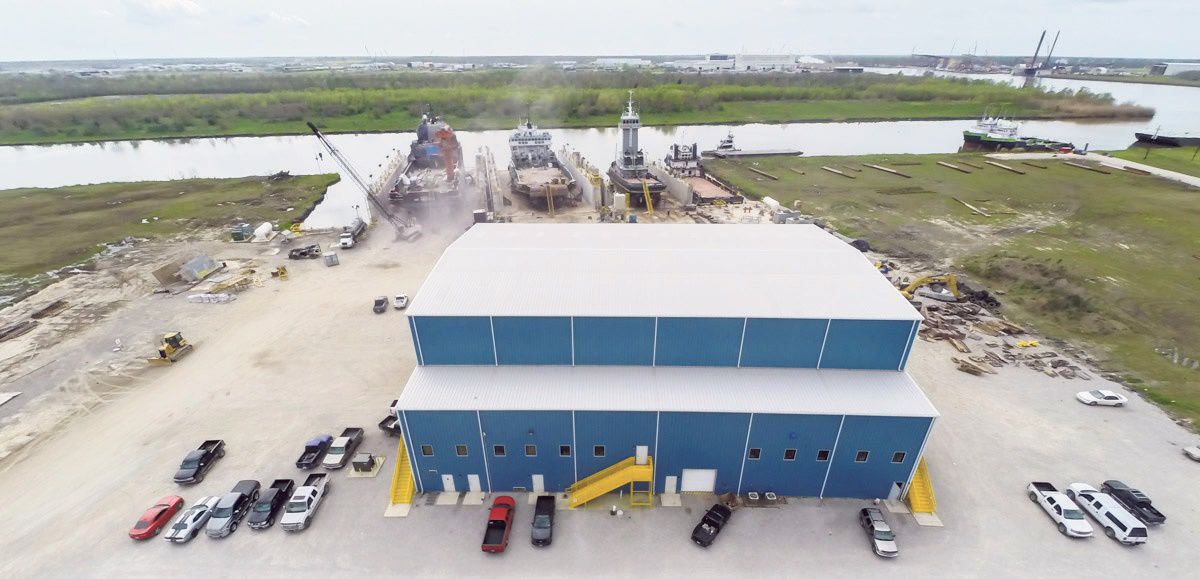
LOOP evolves, plans more storage
May 25, 2016
Death takes no holiday in Chauvin
May 28, 2016Signs of the Bayou Region’s economic downturn are evident at the Port of Terrebonne’s east Houma campus, as at other locations that were bustling with activity before low oil prices and other factors began to take their toll.
But the port’s director, David Rabalais, is optimistic that the port, the community and businesses that call them home will weather the current situation.
“There is work out there,” Rabalais said. “Some people have it and some people don’t. It’s a matter of where you are positioned in the industry … Some of my tenants have laid off people but they are still there.”
The port’s 680-acre site is located on Industrial Boulevard, a mile west of Grand Caillou Road, using land references. By water, it is on the Houma Navigation Canal near its intersection with in Houma. The tract is one mile west of La. Highway 57 and the Houma-Terrebonne Airport. The Port of Terrebonne is located on the Houma Navigation Canal within one-half mile of its intersection with the Gulf Intracoastal Waterway. New vessel construction, as well as repair and restoration, are among the staple activities of port tenants. A new building is also bringing in revenue from federal law enforcement agencies.
In addition to the campus, the port counts within its legal jurisdiction all waters flowing through Terrebonne Parish boundaries, allowing tonnage traveling through or docked anywhere in the parish to be counted as cargo for purposes of placement on federal project list, particularly in regard to vital services like maintenance dredging.
The Port of Terrebonne is ranked 98th out 150 U.S. ports in cargo tonnage, exceeding 2.5 million tons per year and growing.
The commission that oversees the port was created by legislation in 2004, making it a subdivision of state government. The port has the authority to levy a property tax parish-wide of up to 5 mills.
It began as a 400-acre site purchased for $1 million in grant money. Today, the state of Louisiana matches $7 million for development put up by Terrebonne Parish.
Rabalais said he is seeing trends in diversity among his tenants, with signs that some are seeking similar work outside the oil and gas industry to stay afloat and keep working into the future. Coastal restoration projects on tap for the state, paid for by either BP or available federal dollars, are likely to positively impact businesses that have current or future tenancy at the port, Rabalais acknowledges.
State Sen. Norby Chabert has been among stalwart boosters of the port at the Capitol, although this year’s budget woes have resulted in state priority shifts. Nonetheless, Chabert remains focused on leading the charge on the port’s behalf.
Continued support from the state, he said, is consistent with his successful multi-modal transportation bill, signed into law last year.
Without the ports and other key components of various transportation systems, Chabert has repeatedly said, “Louisiana has no economy.”
The state has done its part in the past, Rabalais said, funneling money for building improvements into its accounts. Some of the planned expansions have not occurred, he said. That’s because matching money that the private companies must come up with is being held off, he said, as they adjust to the current economic climate and map their futures. But additional facility expansion, he maintains, remains on the drawing board and will become a reality.
“We got two port priority grants last year for two of our tenants but it is on hold because of the low oil prices,” Rabalais explained. “We can go forward with some projects that we pay for outright because there is a reimbursement provision. We will do both shipyard upgrades and expansions.”
Despite Louisiana’s budget woes, Rabalais is convinced the value of the ports – Terrebonne ‘s in particular – is common knowledge in Baton Rouge at this point.
“The state has recognized that ports generate a lot of jobs and a lot of revenue, and that for every dollar spent, there are $6 or $7 in return.”










